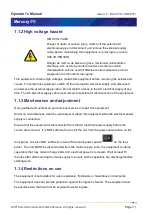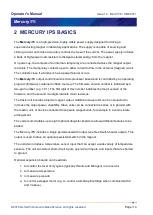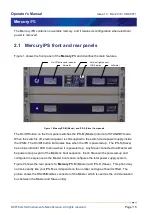
Operator's Manual
Issue 14
/
Mar 2016 / UMC0071
Mercury
iPS
©2016 Oxford Instruments NanoScience. All rights reserved.
Page
24
paths when switched in. Thus if all the resistors are switched in the total resistance is 0.25
ohms with a power dissipation of 1800W per
Mercury
iPS unit.
During run-down, when the Mercury units are sinking current back from an energised magnet,
the rundown resistors will be switched in to maintain the voltage required to keep the run-down
rate at the target ramp rate. If the power being dumped in the heat-exchanger is sufficient to
raise the temperature significantly the powerful fan will cut in to prevent the run-down resistors
from over-heating. It would be normal to hear the run-down fan cutting in during magnet
rundown, although with small magnets or slow rundowns the fan may not be required.
2.7 Alarms and interlocks
The
Mercury
iPS is designed to identify common faults, such as wiring errors that produce
open-circuit or short-circuit conditions.
For errors that require immediate user intervention, the
Mercury
iPS sounds a 1kHz buzzer. The
buzzer sounds intermittently, with the repetition rate increasing for more serious errors.
For some alarm conditions, an interlock operates to provide a safety feature.
Chapter 16 gives a complete list of alarms and help to diagnose faults.






























